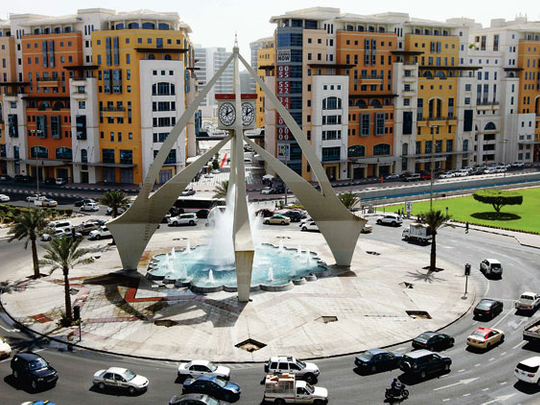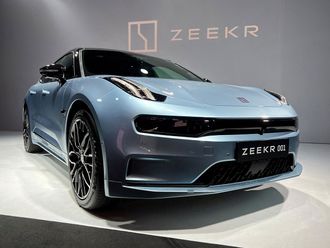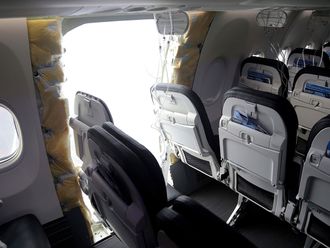
Scanning the Dubai skyline reveals a pastiche of ambitious but stylistically divergent architecture; a place where architects write their signature designs in a bold hand. This melange gives the city an unmistakably modern, yet varied aesthetic. Unifying this wide assortment of relatively new towers is a dependence on steel and glass that can be almost overwhelming in the summer months when the hot sun is reflected off these impressive facades.
Where steel and glass trail off, the eye is greeted by concrete or other masonry type construction. Indoors, the average apartment or villa is a tiled vault that sends your voice echoing from room to room until the installation of furniture finally dampens the sound. For many of us, especially those who have adopted the UAE as our home, there is a notable absence of a material that is ubiquitous in construction outside this region, and that material is wood. And while the relative lack of wood products in construction has a somewhat obvious explanation upon examining the sparse desert landscape, Dubai's status as a major logistic hub means that the emirate is well positioned to import whatever construction materials the market will support; after all, we do not lack for the finer things in Dubai.
While this being the case, a central concern of both the Dubai and UAE governments is sustainability, and as such has become a component of design consideration throughout the country. With that in mind, I wondered if energy efficiency might be an impediment to the use of wood products in construction here. Not so, says architect Greg Mella, a principal at SmithGroup which serves as a sustainability advisor to Masdar. "Wood requires one-tenth of the energy required to make a steel beam of the same strength. That's because, to make the latter you must first collect scrap steel, transport it to the mill and melt it down at very high temperatures. With engineered wood products, you use fast growing, underutilised and less expensive wood species. You don't have to cut down an old growth tree."
Where conventional lumber is required, in lieu of engineered wood products, there are a wealth of products available without the high environmental price tag. These are certified by the Forestry Stewardship Council (FSC), an independent, non-governmental, not-for-profit organisation established to promote the responsible management of the world's forests. The FSC certifiers monitor the supply chain from harvest to mill, in fact, use of FSC certified products is one of the considerations in awarding Leed points to a project.
Application benefits
In addition to its environmental properties, wood products have their own cosmetic and structural merits, suggests Thomas J Westbrook, director of Middle East Sales for Walsh Industries, a US-based firm providing structural building materials for the international commercial construction market. "The real question is how and in what application wood is to be used in the UAE," says Walsh, "but generally speaking, wood is aesthetically friendlier than steel or concrete; and, it provides a diversity to the typical concrete and steel look and feel.
Structurally, wood can be used in many of the same applications as steel and concrete, particularly in the case of Glulam timbers." Known formally as glued laminated timber, Glulam is a type of structural timber product made from laminating smaller pieces of timber together. By combining smaller sections, the resulting product has improved tensile, compression, and bending strength allowing it to cover much longer spans, and bear heavier loads than conventional timber.
While wood products are less common in the region, there are examples where Walsh Industries and others have seen their products successfully implemented in the UAE. As Westbrook explains, their products "[have been used] in roof systems to lighten the load typical to concrete and steel, and in the form of Radiant Barrier OSB (oriented strand board) roof sheathing which, when placed under tile or shingle roof surfaces reduces the amount of radiant heat entering the building by as much as 97 per cent, thereby lowering HVAC ((heating, ventilating and air conditioning) load." More specifically, Westbrook explains that Walsh's Glulam timbers can be seen in the executive car park of the Abu Dhabi Investment Authority (ADIA) main office, and Business Village, a project of the Mohammad Bin Rashid Establishment for Small and Medium Enterprises, where they provide "both structurally and aesthetically superior shading".
Westbrook also contributes indirectly to the mass of concrete buildings springing up around the UAE, as they currently provide overlay plywood panels, which are imported from the US to build the ubiquitous concrete forms that cover much of the developing urban landscape.
Sustainability
As Westbrook explains, the forming plywood offered by Walsh Industries is engineered for an impressive reuse regiment, "[enabling] multiple use of each panel up to 75 times [or more]." That level of reuse has a green attribute as well, since a longer useful lifespan per sheet means less plywood is used overall. Walsh also contributes more directly to green building in the region, and Westbrook explains that the firm currently provides "FSC products that qualify the user for sustainable building solutions, both under Estidama in Abu Dhabi, and to earn multiple Leed points throughout the UAE depending upon the product and application".
Despite Dubai's central location, Walsh Industries doesn't necessarily use Dubai as its logistics hub. "Walsh Industries is marketing products into other GCC markets," says Westbrook, "but typically we can ship direct to the port in the particular country more efficiently and at lower cost than trans-shipping or re-exporting from Dubai." Still, if the volume of products sold in the region were to increase, a hub model would eventually make sense. But that level of use might never arrive, and in Westbrook's view, the current barrier to growth is awareness. "The largest impediment to usage of wood in the UAE is lack of understanding by the architectural, engineering and project management sectors. Most of the people working in those disciplines are very knowledgeable about steel and concrete, but do not know about wood." If Westbrook seems slightly frustrated with the current usage levels of wood products, it's because he really believes in what he's selling. "Wood continues to be a superior building and construction material throughout the world," he says. "The application for wood products in the UAE goes well beyond the meagre applications currently being used."
Walsh Industries is just one of many companies plying their wood-based wares in the UAE market, and each year a cross section of stakeholders descend upon the Dubai Wood Show to network, exchange ideas and make sales. "We took part in the ‘Dubai Wood Show 2010" with aims to establish our company as a leading supplier of high quality timber products from across the globe," says Marius Van Der Berg, sales executive, Gulf Timber Company. "We have also seen significant interest in certified wood among the regional and global buyers." The trade show itself may give some indication of the growing interest level in wood products, although it's difficult to say to what extent that reflects structural usage.
But as Westbrook explains, engineered wood products have unique attributes that merit application specific usage in any market. Also, one has to look at the wooden abras lining Dubai Creek to realise that wood construction already has a long established niche in this region, and is held in high regard both culturally and aesthetically. Whether or not that aesthetic can make inroads in the UAE development industry still remains to be seen.












